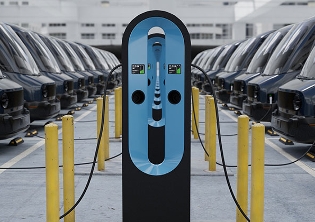How to craft an effective company vehicle policy
July 30, 2025

Key insights:
-
Establish boundaries for both company and personal vehicle usage, including reimbursement rules and examples of prohibited activity (e.g., ridesharing during off-hours).
-
Clarify who pays for fuel, insurance, and maintenance. Offer fair reimbursement (e.g., IRS mileage rates) and consider car allowances for heavy use roles.
-
Require regular inspections, proper insurance, and safety training to reduce risks for both company-owned and employee vehicles.
-
Use digital tools to track mileage, expenses, and incidents. Establish clear steps for submitting reimbursements and handling accidents.
-
Educate employees on insurance coverage and tax implications of business and personal vehicle use to ensure compliance with IRS and CRA regulations.
Managing company cars or navigating a personal vehicle used for work scenarios can be tricky. Without clear rules, employees might be left guessing about what’s okay, and companies could face unnecessary risks or inefficiencies.
The solution? Clear, straightforward policies. A solid company vehicle policy or guidelines for using personal cars for work keeps everyone on the same page and avoids any headaches down the line.
Here are five key things to think about when creating a use of company vehicle policy that actually works:
- Define appropriate use of a company vehicle
It’s important to be clear about when and how employees are allowed to use company vehicles to avoid misuse and confusion. For example, a construction firm may allow employees to take company trucks home overnight but require that they are only used for commuting and work-related tasks, not for personal errands.
Similarly, specify conditions for personal vehicle use for work. If employees at a sales company are required to use their own cars to meet with clients, the policy should outline whether those trips qualify for mileage reimbursement, how rates are calculated, and if trips outside of normal business hours are allowed.
Companies should also consider offering examples of prohibited use to avoid ambiguity. For instance, a company vehicle used for ridesharing on platforms like Uber or Lyft during off-hours could violate insurance policies, leaving the company liable. Similarly, some companies prohibit secondary drivers (spouse or other member of the household) from using the vehicle during non-work hours. These policies should be documented and shared in employee handbooks, with regular updates as the business evolves.
- Clarify responsibilities and reimbursements
When it comes to the use of company vehicles, it’s important to be clear about who’s ultimately responsible for the costs. For company-owned vehicles, this usually means the company handles fuel, insurance, and routine maintenance.
For companies that rely on personal vehicle use for work, it’s essential to document the reimbursement process. A clear policy might specify that employees are reimbursed at the federal mileage rate, which helps cover fuel, wear-and-tear, and other costs.
For employees who use their personal vehicles heavily for work, companies might consider offering extra support. A field technician driving hundreds of miles a week, for instance, could benefit from a car allowance or additional reimbursement to offset the extra wear and tear.
Setting clear guidelines on what the company will cover and under what conditions helps avoid confusion and builds trust.
An effective reimbursement program isn’t just a nice-to-have, it’s a cornerstone of fair and transparent vehicle use policies. It ensures that employees aren't left shouldering the financial burden of business-related travel in their personal vehicles. Reimbursement programs also promote equity across the organization, accounting for varying levels of vehicle use, geography, and cost of living. More importantly, they reinforce employee satisfaction and retention by recognizing the value of their out-of-pocket contributions and time on the road.
- Set safety standards
Keeping employees safe on the road should always be a top priority, and having clear standards in place helps reduce risks. For company vehicles, it’s important to stick to regular inspections, follow maintenance schedules, and ensure insurance coverage is always up to date. For example, a utility company might require monthly check-ups to make sure brakes, tires, and lights are working properly. Routine maintenance like this helps prevent accidents caused by mechanical issues and protects both employees and company property.
A comprehensive company vehicle policy should also address safety compliance for both company-owned and personal vehicles. Employers might also require proof of insurance with minimum coverage levels to avoid liability problems. Offering extras like defensive driving courses or safety training for employees who drive often, like sales reps or delivery drivers, can go a long way in reducing accidents and creating a safer work environment for everyone.
- Establish reporting procedures
A clear reporting process is key to tracking vehicle use, accidents, or violations, ensuring accountability. For company vehicles, businesses could implement logbooks or digital mileage tracking apps to monitor usage. Element’s fleet management solution enables companies to track mileage, fuel consumption, and maintenance needs all in one platform.
For employees using personal vehicles, businesses should create an easy way to submit expense reports for mileage or travel reimbursements. For instance, an employee driving their own car to visit a client should have access to tools like Expensify or Concur to log their trips and submit receipts for reimbursement. Clear deadlines for submitting reports, such as within 30 days of the trip, can make the whole reimbursement process smoother. Additionally, policies should outline the steps for reporting vehicle-related incidents, ensuring employees know how to handle accidents or violations, whether they involve a company-owned or personal vehicle.
It’s also important to have clear policies for reporting vehicle-related incidents. Whether it’s a company car or a personal vehicle, employees should know exactly what to do in case of an accident or violation.
- Address legal and tax implications
Having clear vehicle use policies is key to reducing legal and tax risks for both employers and employees. It’s important to outline insurance requirements, such as whether employees need extra coverage when using personal cars for work.
Employees also need to be aware of the tax implications of vehicle use. For instance, using a company car for personal errands could count as taxable income, and both the IRS and Canada Revenue Agency have specific guidelines around this. Educating your team on these rules can help avoid surprises at tax season. Clear communication about these policies keeps everyone on the same page and compliant with regulations.
Avoid hassles with a clear company vehicle policy
By creating and regularly updating a well-thought-out vehicle use policy, companies can protect themselves, stay compliant, and help their employees make informed choices. Whether it’s developing a company vehicle policy or creating a use of company vehicle policy that includes personal vehicle use for work, a little planning upfront can save a lot of time and headaches down the road. Looking for help developing effective policies for your organization? Don’t hesitate to reach out to our team of trusted advisors.
Never miss an update
Subscribe for more news and thought leadership from Element.


